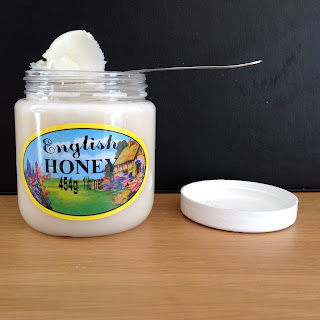Perhaps you are old enough to remember the radio blackout during re-entry as the crew of Apollo 13 returned from their aborted lunar mission in 1970, which lasted 87 seemingly interminable seconds longer than the roughly 4 minutes expected.
Maybe you recall the feeling of helplessness - there was nothing to do except wait.
Or perhaps you recall holding your breath for that bit of the 1995 film.
Well, that sensation of helpless waiting is being experienced by many beekeepers this year as they wait to find out whether their new queens have returned successfully from their mating flights.
All bees start out as eggs laid in wax cells. Eggs that turn into queens are no different except they are laid in special queen cells and fed a diet rich in royal jelly. Queen eggs turn into larvae; fat, white, Michelin man grubs after 3 days and, after being well fed for 6 days, they are sealed in to their queen cells for a further 6 days. When they emerge they have to fly out of the hive to a place where drones (or as our nephew says, kings) congregate in order to mate. After mating the queen returns and starts laying.
This year, inclement weather has prevented newly hatched virgin queens from heading out on their mating flights.
We were on the point of despair with the nucleus we set up earlier with brood and nurse bees from the prolific G Bees. We thought that, as beginner beekeepers, we had just got it wrong. So, it was with complete astonishment that, at the most recent inspection, we observed clearly visible eggs, nice fat white larvae and sealed brood. Hooray! We have a queen laying in that colony even though we haven't seen her. Now we just need to ensure that she and her bees are adequately fed until the colony has enough foragers to sustain it.
Since Queen Joan went missing we haven't seen any eggs, larvae or sealed brood in the G Bees' colony. Three sealed queen cells were left in the colony and all queens appear to have hatched but the first, or the strongest, of those will have despatched the other two. We have been waiting what seems like an eternity for evidence of a laying queen. This isn't helped by the fact I lost my varifocals about the time that Queen Joan disappeared and I wasn't sure whether there weren't any eggs or I just couldn't see them. Last weekend we even started to make enquiries about buying in a queen. As a result:
a) We were reminded that it can take 3 weeks for a queen to mate and start laying;
b) We learnt that we are not the only beekeepers experiencing a long queenless period this year. This is because it has been unseasonably cold, windy and wet at the wrong times and that left the queens struggling to get out;
c) We have to wait another week before we can be sure that we don't have a queen.
We've got to hold our breath helplessly for a few more long days!

